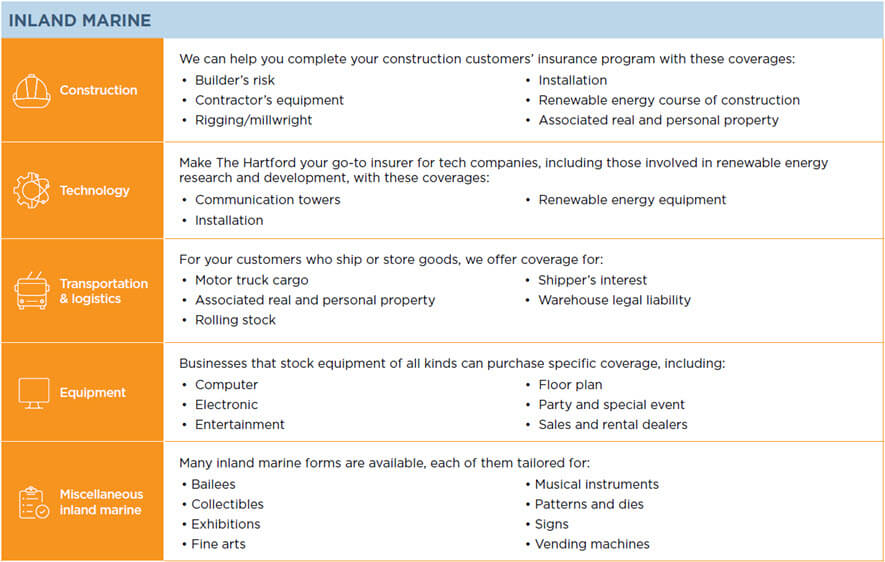Effective cash flow management is crucial for manufacturing businesses to maintain operational stability and achieve growth. Managing cash flow efficiently enables companies to meet financial obligations, invest in new opportunities, and withstand economic downturns. However, many manufacturing firms struggle with cash flow issues due to factors like slow-paying customers, high inventory costs, and inefficient production processes. This article provides actionable strategies to rapidly enhance cash flow in a manufacturing business, helping owners and managers overcome common challenges and improve their financial health. Implementing these tactics can lead to a more sustainable and profitable operation.
Effective Strategies for Enhancing Cash Flow in Manufacturing
Improving cash flow in a manufacturing business is crucial for its survival and growth. One of the primary challenges manufacturing businesses face is managing their cash flow effectively due to the high costs associated with raw materials, labor, and equipment. To address this, businesses can implement several strategies that can significantly enhance their cash flow.
Optimize Inventory Management
Optimizing inventory management is a critical step in improving cash flow. By maintaining an optimal level of inventory, businesses can reduce the amount of cash tied up in inventory. This involves implementing a just-in-time (JIT) inventory system, which ensures that inventory levels are kept low by receiving inventory just in time to meet customer demand.
| Benefits of JIT Inventory System | Description |
|---|---|
| Reduced Inventory Costs | Lower costs associated with storing and maintaining inventory. |
| Minimized Waste | Less chance of inventory becoming obsolete or going to waste. |
| Improved Cash Flow | Less cash is tied up in inventory, freeing up resources for other business needs. |
Streamline Accounts Receivable
Streamlining accounts receivable is another effective way to improve cash flow. This involves implementing efficient billing and collection processes to ensure that payments are received promptly. Businesses can achieve this by offering incentives for early payment, implementing a robust follow-up system for late payments, and considering the use of factoring or invoice discounting.
| Strategies for Streamlining Accounts Receivable | Benefits |
|---|---|
| Offer Early Payment Discounts | Encourages customers to pay invoices early, improving cash flow. |
| Implement Automated Billing | Reduces administrative costs and minimizes errors in billing. |
| Use Factoring or Invoice Discounting | Provides immediate access to cash tied up in outstanding invoices. |
Renegotiate with Suppliers
Renegotiating terms with suppliers can also significantly improve cash flow. By extending payment terms or negotiating better prices, businesses can reduce their outgoings and retain more cash. This requires building strong relationships with suppliers and being transparent about the business’s cash flow challenges.
| Benefits of Renegotiating with Suppliers | Outcomes |
|---|---|
| Extended Payment Terms | More time to pay suppliers, easing cash flow pressures. |
| Better Pricing | Reduced costs for raw materials or services, improving profitability. |
| Improved Relationships | Stronger, more collaborative relationships with suppliers. |
Reduce Operational Costs
Reducing operational costs is a direct way to improve cash flow. This can be achieved by implementing cost-saving measures such as energy-efficient equipment, reducing waste, and streamlining production processes. By lowering operational expenses, businesses can retain more of their revenue as cash.
| Cost-Saving Measures | Impact on Cash Flow |
|---|---|
| Energy Efficiency | Lower utility bills, reducing operational expenses. |
| Waste Reduction | Less waste means lower disposal costs and potentially lower raw material costs. |
| Process Optimization | Reduced labor and material costs through more efficient production processes. |
Improve Forecasting and Planning
Improving forecasting and planning is essential for maintaining a healthy cash flow. By accurately predicting future cash inflows and outflows, businesses can make informed decisions about investments, funding requirements, and cost management. This involves regularly reviewing financial data and using forecasting tools to anticipate cash flow challenges.
| Benefits of Improved Forecasting | Outcomes |
|---|---|
| Better Decision Making | Informed decisions based on anticipated cash flow. |
| Proactive Management | Ability to anticipate and mitigate cash flow challenges. |
| Reduced Risk | Less likelihood of unexpected cash flow shortfalls. |
How can I increase my cash flow fast?

To increase your cash flow quickly, it’s essential to focus on strategies that either bring in more money or reduce expenses. One effective way to achieve this is by optimizing your financial management. This involves closely monitoring your income and expenses to identify areas where you can make adjustments to free up more cash.
Reduce Unnecessary Expenses
Cutting back on unnecessary expenses is a straightforward way to improve your cash flow. By reducing your outgoings, you can retain more of your earnings. To do this effectively, you should:
- Identify non-essential expenditures that can be cut back or eliminated.
- Renegotiate contracts with suppliers to secure better deals.
- Implement cost-saving measures such as energy-efficient practices to lower utility bills.
Improve Accounts Receivable Management
Enhancing your accounts receivable management can significantly boost your cash flow. This involves taking steps to ensure that you’re paid promptly by your customers. Key actions include:
- Implementing a strict invoicing system to ensure bills are sent out promptly and accurately.
- Offering incentives for early payment, such as discounts for customers who pay their bills ahead of schedule.
- Following up on overdue accounts with reminders and, if necessary, taking further action to secure payment.
Enhance Sales and Revenue
Increasing your sales and revenue is a direct way to improve your cash flow. To achieve this, consider:
- Diversifying your product or service offerings to attract new customers and increase average transaction values.
- Implementing effective marketing strategies to boost sales and expand your customer base.
- Analyzing and optimizing your pricing strategy to ensure it is competitive and maximizes profitability.
What are two actions a business might take to improve its cash flow position?

To improve its cash flow position, a business might consider implementing strategies that directly impact its cash inflows and outflows. Two primary actions include managing accounts receivable and optimizing inventory levels.
Managing Accounts Receivable
Effective management of accounts receivable is crucial for maintaining a healthy cash flow. This involves implementing strategies to ensure that customers pay their debts on time. Businesses can achieve this by offering discounts for early payment, which incentivizes customers to settle their accounts promptly. Other strategies include:
- Implementing a rigorous credit check process for new customers to assess their creditworthiness.
- Clearly communicating payment terms and conditions to avoid any confusion.
- Following up with customers through regular reminders and statements to ensure timely payments.
Optimizing Inventory Levels
Optimizing inventory levels is another critical action that can significantly improve a company’s cash flow position. Holding too much inventory can tie up a substantial amount of cash, while holding too little can lead to lost sales. Businesses can optimize their inventory by adopting just-in-time (JIT) inventory management systems, which ensure that inventory levels are aligned with demand. Key steps include:
- Conducting regular inventory audits to identify slow-moving or obsolete stock.
- Implementing an inventory management system that provides real-time data on inventory levels.
- Adopting a demand forecasting approach to predict future sales and adjust inventory accordingly.
Enhancing Cash Flow Forecasting
Enhancing cash flow forecasting is essential for anticipating and managing future cash flow. By accurately predicting cash inflows and outflows, businesses can make informed decisions to manage their cash flow more effectively. This involves using historical data and market trends to create detailed cash flow forecasts. Key considerations include:
- Regularly reviewing and updating cash flow forecasts to reflect changes in the business environment.
- Using cash flow forecasting tools that can provide accurate and timely forecasts.
- Analyzing cash flow trends to identify areas for improvement and opportunities for growth.
Frequently Asked Questions
What are the most effective ways to improve cash flow in a manufacturing business?
Improving cash flow in a manufacturing business requires a combination of short-term and long-term strategies. One effective way is to optimize inventory management by implementing a just-in-time (JIT) inventory system, which reduces inventory holding costs and frees up cash. Additionally, manufacturers can streamline their production processes to reduce waste and improve efficiency, resulting in lower production costs and faster turnaround times. Renegotiating contracts with suppliers and implementing a cash flow forecasting system can also help to improve cash flow by identifying areas where costs can be reduced and cash flow can be improved.
How can a manufacturing business reduce its accounts receivable and improve cash flow?
Reducing accounts receivable is crucial to improving cash flow in a manufacturing business. One way to achieve this is by implementing a robust invoicing and payment system, which ensures that customers are invoiced accurately and promptly. Manufacturers can also offer incentives for early payment, such as discounts or rewards, to encourage customers to pay their outstanding balances quickly. Furthermore, conducting regular credit checks on customers and establishing clear payment terms can help to minimize the risk of late or non-payment.
Can improving supply chain management help to improve cash flow in a manufacturing business?
Improving supply chain management is essential to improving cash flow in a manufacturing business. By building strong relationships with suppliers, manufacturers can negotiate better prices and payment terms, reducing costs and improving cash flow. Implementing a supply chain financing program can also help to improve cash flow by allowing manufacturers to pay suppliers at a later date, while still taking advantage of early payment discounts. Additionally, optimizing logistics and shipping can help to reduce costs and improve delivery times, resulting in improved customer satisfaction and increased cash flow.
What role does cash flow forecasting play in improving cash flow in a manufacturing business?
Cash flow forecasting plays a critical role in improving cash flow in a manufacturing business. By accurately predicting future cash inflows and outflows, manufacturers can identify potential cash flow shortfalls and take proactive steps to mitigate them. This can include reducing costs, delaying capital expenditures, or securing additional funding. A robust cash flow forecasting system also enables manufacturers to make informed decisions about investments and funding, ensuring that they have sufficient cash on hand to meet their financial obligations.





